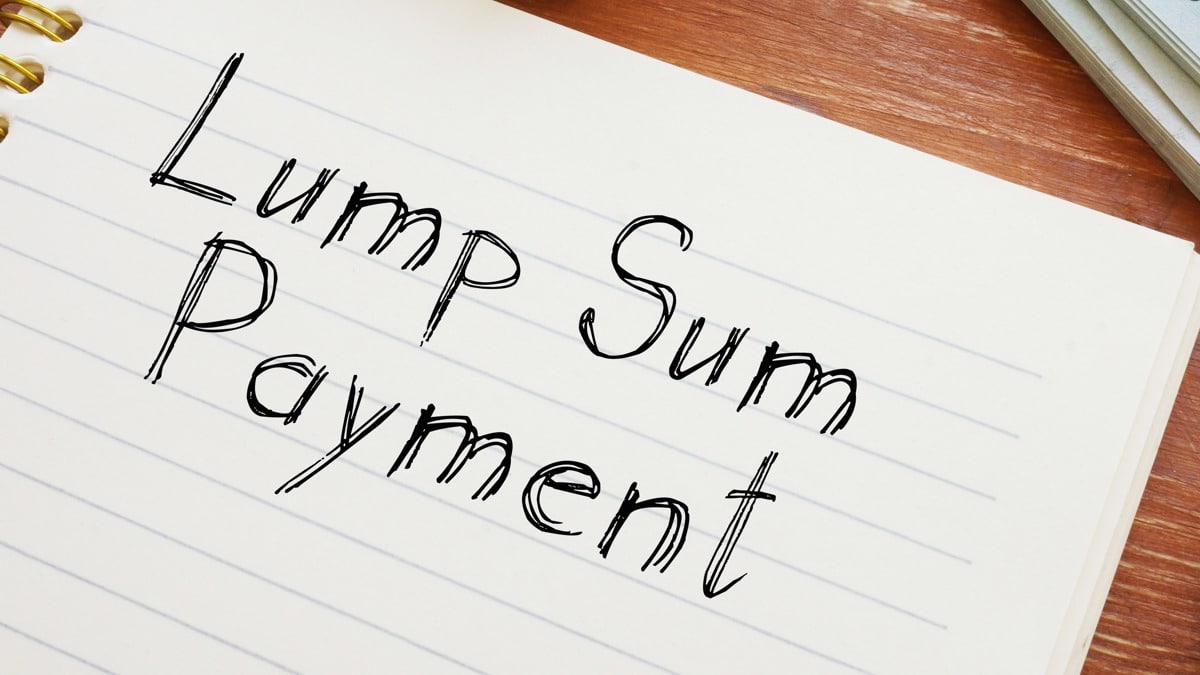There are essentially two ways to access amounts from your SMSF pension account(s): as a pension payment or a lump sum. The method you choose can have a significant effect on your retirement savings.
Why? Because the transfer balance cap imposes a lifetime limit on balances that can be moved from the accumulation stage of super into the tax-free “retirement” or “pension” phase.
When you start a retirement phase income stream (a pension), the starting value is assessed against this lifetime limit, which is currently $1.9 million. Once this has been used up, you can’t move any further amounts into the tax-free retirement phase from your accumulation account.
You also need to keep in mind that pension payments you withdraw from your fund DO NOT reduce the amounts that have been assessed against your transfer balance cap. The pension payments only reduce the pension balance.
What if Amanda instead requested a lump sum payment from her pension, often referred to as a lump sum commutation? Not only will that lump sum payment reduce her pension balance, but it will also come off her member’s transfer balance account.
2026 SMSF calendar
Our free calendar includes due dates for important documents plus suggested dates for trustee meetings and other strategic issues for your SMSF.
"*" indicates required fields
This would then allow a transfer of further amounts held in the taxable accumulation phase, into the tax-free retirement phase.
As you can see from the above, it’s important to have a clear understanding of the difference between pension payments and lump sum payments, and the processes required to get the best outcome from your fund.
Pension payments
Pension payments are made based on a written, ongoing agreement between the fund member and the fund trustee where a series of payments is made over time.
The frequency of the pension payments is based on the pension agreement and could be weekly, fortnightly, monthly or even one pension payment made annually from the fund.
Irrespective of the frequency, all these ‘linked payments’ would be considered pension payments due to the ongoing obligation for the trustee of the fund to make that series of payments.
The key is having the appropriate pension documentation in place at the start of the pension.

Free eBook
SMSF investing essentials
Learn the essential facts about the SMSF investment rules, how to create an investment strategy (including templates) and how to give your strategy a healthcheck.
"*" indicates required fields
Lump sum payments
A lump sum payment refers to a one-off payment from a super fund on the written request of a member. Once paid, there is no further obligation to make any further payments.
Again, it is the paperwork in place at the time that determines how payments will be treated. In the case of a lump sum, it would be in response to a member’s request for a one-off, lump-sum payment to be made.
Process and procedures
As mentioned earlier, the key to getting the best outcome is having the appropriate fund paperwork and procedures in place to cover the minimum pension payments required for the year.
This would usually include:
- A member request for a pension to be paid. This is only ever done at the start of the pension, and would often include:
- the start balance for the pension (the purchase price of the pension)
- the frequency of each pension payment
- the amount of each pension payment or a method to calculate the amount
- (in some cases) a request that the trustees treat all payments above the minimum pension required as lump sum payments, and there would be separate documentation for these.
- A trustee resolution (minute) to action the above
- Ensuring documentation is in place before any payment is made
- Confirmation in writing each subsequent year, between the trustees and the member, the amount of pension payment requested for that year. This could be as simple as confirming that only the minimum pension payment required by law should be paid.
Where the fund member then wants to access a lump sum (commutation) from the existing pension, you would usually expect to see:
- A member request for a lump sum payment including the amount and from which account it should be paid – the member’s pension account or their accumulation account
- A trustee resolution (minute) to action the above
- Documentation in place before any payment is made.
This documented lump sum payment request confirms that the additional payment is separate to the existing pension payments.
Super knowledge is a super power

"*" indicates required fields
The bottom line
The lump sum payment strategy is something to consider where a member is looking to access benefits from a pension account above the statutory minimum amounts. It allows access to the same amount of money from the pension but can also open up strategic opportunities to transfer more funds into retirement phase later.
Why? The member may end up with more funds in their accumulation account after receiving an inheritance or from the sale of assets. Having the option of moving additional funds into the tax-free retirement phase of super will, in most cases, provide a better retirement outcome.



Leave a Reply
You must be logged in to post a comment.